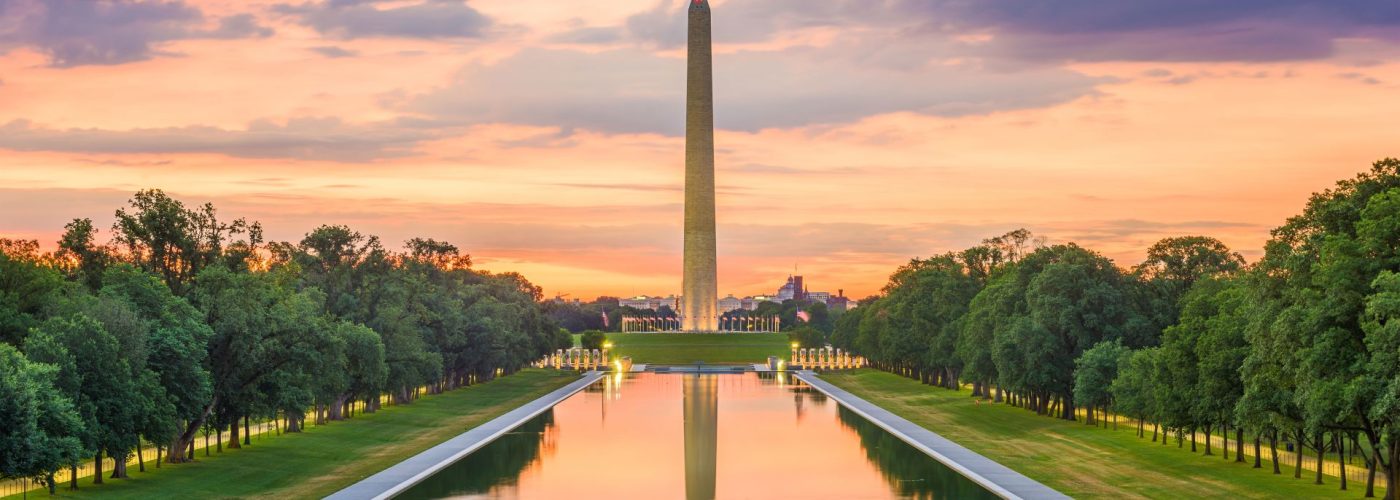Washington D.C., the U.S. federal capital, is recognized as a political hub where power players sit high and mighty. It is home to the federal government’s three branches: the White House, Capitol and Supreme Court. The national capital is also home to neoclassical monuments, iconic museums and many performing-arts venues.
But there’s a lot more to discover in Washington, D.C. than just politicians spinning the wheels of government. Business Insider and Niche have consistently ranked the U.S. capital among top 50 cities to live for everyday singles and families, sports fans and foodies, digital nomads, and more.
If you’re planning on moving to Washington, D.C., you might want to know what life is really like in the capital city. Here’s what you should know:
What’s the Climate Like in Washington, D.C.?
Washington, D.C. has a subtropical climate, with cold winters and hot and muggy summers. Rainfall is evenly distributed throughout the year, averaging 3-4 inches (75-100 mm) per month.
Summer in the district can be brutally hot and humid. The average summer temps range from as low as 70°F (approx. 24°C) to as high as above 100°F (approx. 39°C).
Winters are damp and bring heavy snowfalls that can ground public transit to a halt. The average winter temperatures are in the mid-30s°F (approx. 2°C). There are plenty of clouds and rain as well.
Spring and autumn are pleasant months that are often accompanied by mild temperatures. Many tourists flock to the city in March to see the white and pink flowers of D.C.’s cherry blossom trees along the Tidal Basin.
How’s Commuting in Washington, D.C.?
The Washington Metropolitan Area Transit Authority (WMATA) runs an extensive public transit system in the District and its suburbs. However, many people that live in Maryland and Virginia suburbs prefer to drive, resulting in heavy traffic.
The good news is that Washington is bike-friendly for those willing to get some exercise. The Capital Bikeshare program allows people to get around on two wheels pretty easily.
In recent years, bike lanes have been expanded across the city. Residents now enjoy bicycling as a mode of transportation to escape busy urban areas.
If the idea of using a bike is something that might pique your interest, living in Washington would make sense. It allows you to meet up with friends and attend social events such as brunch and happy hour—the district’s mainstays of living.
How Much Does It Cost to Live in Washington, D.C?
The cost of living in Washington, D.C. is 60% higher than the U.S. average. A central location on the east coast, coupled with a high-income population, and the height restrictions all make D.C. the fourth most expensive city in the nation.
Housing costs in Washington, D.C. are more than triple the national median. On average, a one-bedroom rental apartment goes for about $2,400 while a two-bedroom one is around $3,200 per month, depending on the neighborhood. There are also plenty of monthly apartments in Washington DC for those looking to settle in as quickly as possible.
When deciding to live in DC, it’s vital to consider the cost of public transportation. Where you choose to live in the metro’s four quadrants will significantly impact your cost of living.
The D.C.’s transit system is one of the best in the country. But the Metro is also one of the costliest subway systems, with prices starting from $2.25 to $6 for a one-way trip. All this can quickly add up making your stay unfavorable.
What’s There To Do in Washington, D.C.?
Washington, D.C. has plenty of wonderful things to do and see any day of the year. Looking for cuisines, nightlife, museums, arts, political activism, or outdoor activities? This is the best place to be.
Beyond tourist hotbeds like Arlington National Cemetery and the Jefferson Memorial, there are dozens of museums and galleries to visit. From the United States Holocaust Memorial Museum to The Mansion on O Street, nearly every corner of the District has a sense of history.
Parks and greenspaces comprise close to 20% of Washington’s total area. You’ll come across National Park Service parks like the 9-mile Rock Creek Park, National Arboretum, National Zoological Park, and many other beautiful spaces.
Those seeking to stimulate their taste buds have something to smile about. A world-class city, DC is home to cuisines from around the world. From Ben’s Chili Bowl for half-smokes to Henry’s Soul Café for mumbo sauce, rest assured you’ll be spoiled for choice.
Need live music and theater? Washington, D.C. has a wealth of nightlife options. Music venues along U Street are full of talent, while amphitheaters in the suburbs provide high-class entertainment all-year round.
Washington, D.C. also covers professional and college sports. The District has teams in all six major pro sports: MLB, NBA, NHL, NFL, WNBA, and MLS. There is never a dull moment in Washington, D.C.
Welcome to America’s Capital!
With people from different nationalities, religions and ethnic backgrounds, Washington, D.C. is much more diverse than the average American city. Long-time residents love living in D.C., and you’ll find something to love, too.
If the capital sounds like your dream place to live, come experience this great city with boundless opportunities. Whether you prefer a bustling urban community or a discreet residential area, there is a neighborhood to match your budget and lifestyle.





